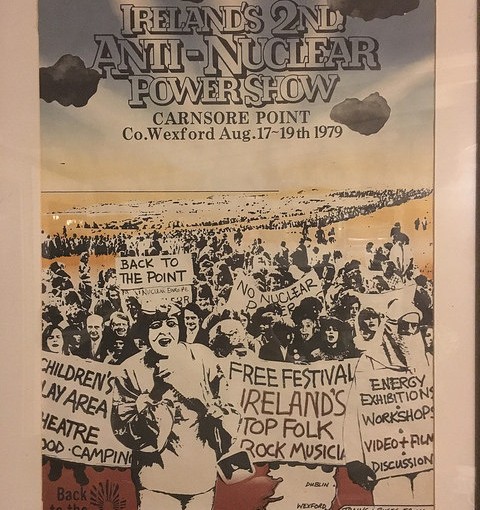Carnsore Point, Co Wexford, was proposed as the location for Ireland’s first nuclear power plant. Many activists celebrated the decision not to pursue this option, but what were the impacts of that decision? Was this really a victory for our environment and our economy?
Ireland was on the cusp of introducing nuclear power about 40 years ago. At the time, we were very dependent on oil for our electricity supplies, North Sea gas wasn’t well developed and we had no Irish gas fields, there was no international market for coal and our domestic hydro capability was already pretty much fully utilised. Our options were limited – to put it mildly.
Following the 1973 Oil Crisis, which increased the price of oil in Europe while decreasing its perceived security of supply, many nations reconsidered how they generated their electricity. France, for example, chose to build an extensive network of nuclear stations to become almost totally free of oil for electricity.
Ireland also considered nuclear power at this time, and proposed building the first of 2 units at Carnsore Point in County Wexford. Following a lengthy debate, this plan was shelved in 1980 for a variety of reasons including a partial meltdown at Three Mile Island in the US, the discovery of natural gas off Kinsale, the development of an international market for coal and a small but vocal anti-nuclear sentiment expressed on the national airwaves and at the famous “Come to the Point” rallies held at Carnsore.
There is an excellent account of this period, as well as a general history of all things nuclear in Ireland, in Veronica McDermott’s book “Going Nuclear: Ireland, Britain and the Campaign to Close Sellafield“. It’s a great read and is very highly recommended for anyone with an interest in nuclear or energy matters in Ireland.
Rejecting nuclear, Ireland instead decided to build a coal-fired station at Moneypoint, Co Clare. It is interesting to compare the impact of that decision against what might have been the case had we proceeded with nuclear.
Moneypoint has burned over 50 million tons of coal since it first started producing electricity in 1985, emitting some 150 million tons of CO2 in the process. It has also emitted millions of tons of sulphur dioxide (SO2) – the cause of Acid Rain – and nitrogen oxides (NOx), although those emissions have reduced by about 75% since an emissions abatement retrofit in 2008.
In 2015, Moneypoint emitted over 4.5 million tons of CO2, 3300 tons of SO2, 5300 tons of NOx and 200 tons of particulates.
For comparison, we can look to Slovenia, where they built a nuclear plant similar to the type we had planned to build at that time. Krsko produced an all-time high output of 6.06 TWh in 2014 and is licensed to run until 2043.
Despite generating over 150 TWh since 1983, Krsko Nuclear plant has emitted no greenhouse gases in its entire operation – although it would be allocated responsibility for around 3 million tons of CO2 emissions. (Those emissions arise from all activities required to produce electricity at the nuclear plant, including mining and fabricating the fuel, running the station and storing the spent fuel).
Some self-styled ‘environmentalists’ consider the rejection of nuclear energy as the first major victory of the environmental movement in Ireland. Considering that the ‘victory’ has resulted in additional emissions of over 150 million tons of greenhouse gases, it appears that it has instead been a huge environmental disaster.
Before Ireland determines how to solve its energy problems, it is vital that the environmental impacts of all potential options are fully assessed before any major decisions are made. For the health of our future environment and economy, we cannot afford to make the same mistakes we made over 40 years ago.
If we consider nuclear energy rationally but still decide that it is not for Ireland, we must be clear as to how we will mitigate the environmental and economic implications of that decision.
But the current policy of ignoring nuclear energy based on out-dated preconceptions is very unlikely to lead to the correct outcome.
#carnsore, #politics

free speech?
Nuclear. Best of a bad choice. The current choice – continue to burn ‘clean coal’. President Trump’s words, not mine.
I used to think nuclear was the best of a poor choice too, until I dug a lot deeper into the energy question. Now, it appears to me to be one of the best choices we have.
When it is done properly, nuclear can supply clean and affordable energy reliably without emissions and with one of the lowest impacts on the environment of any technology. That includes accounting for the full life cycle from mining through to decommissioning of the plant and spent fuel storage. Most other technologies do not account for their full life cycle impacts.
A few small, modern reactors along with some renewables would allow Ireland to reduce its emissions from electricity generation to much lower levels and at significantly lower cost than any portfolio that tries to operate using renewables alone.